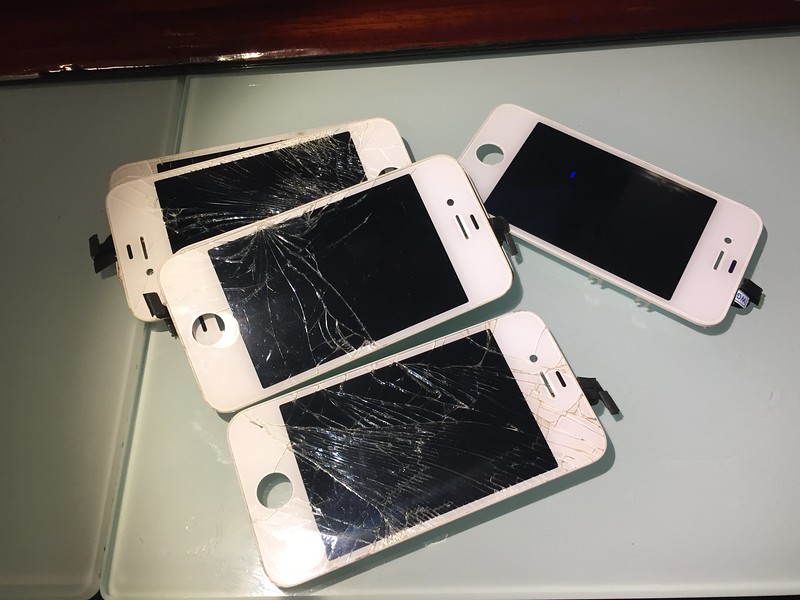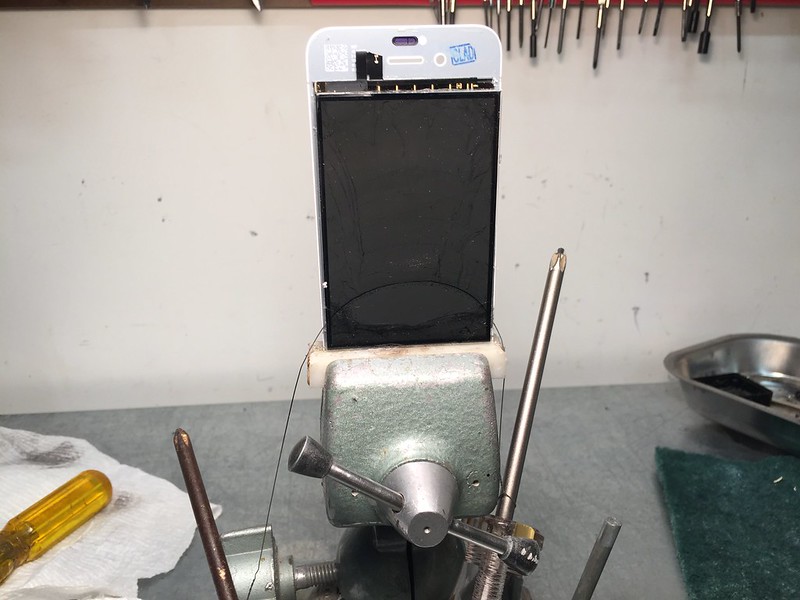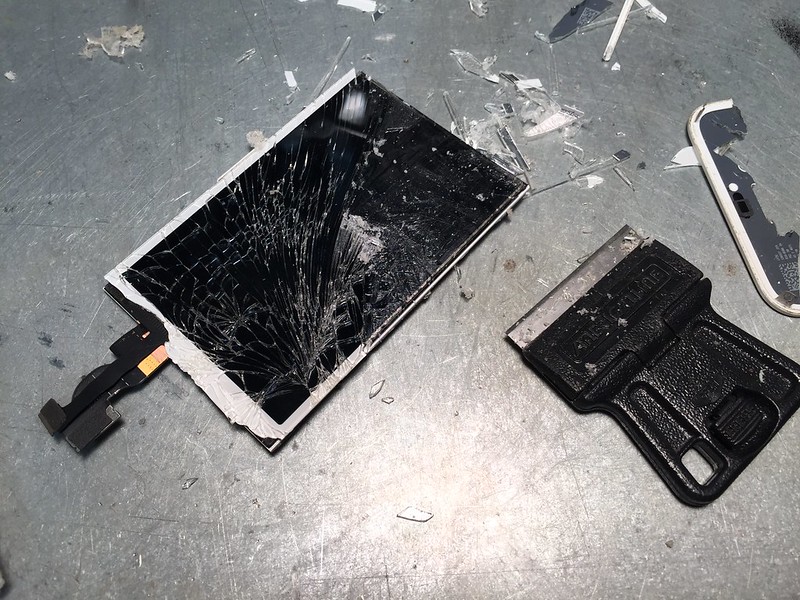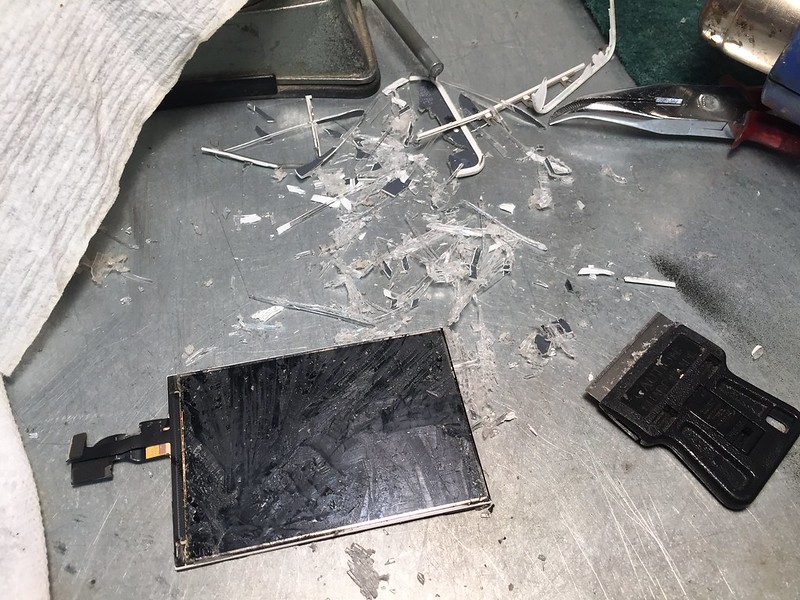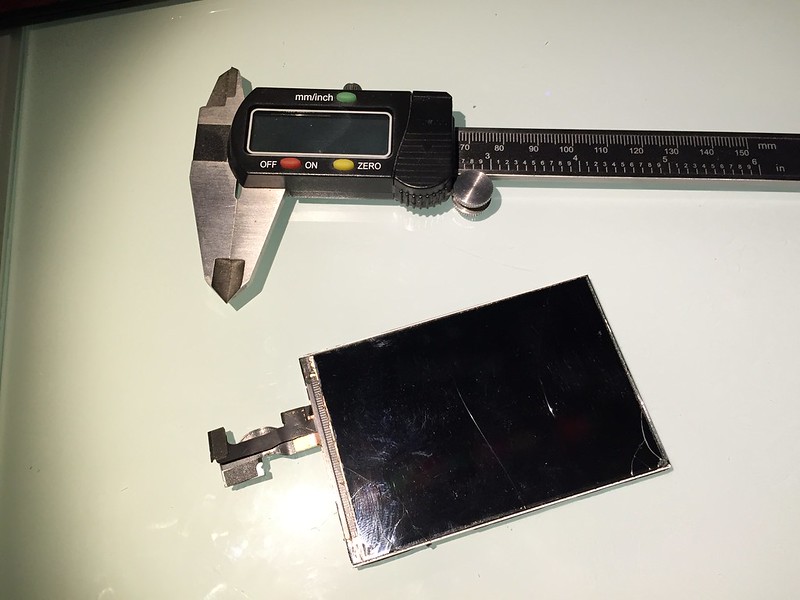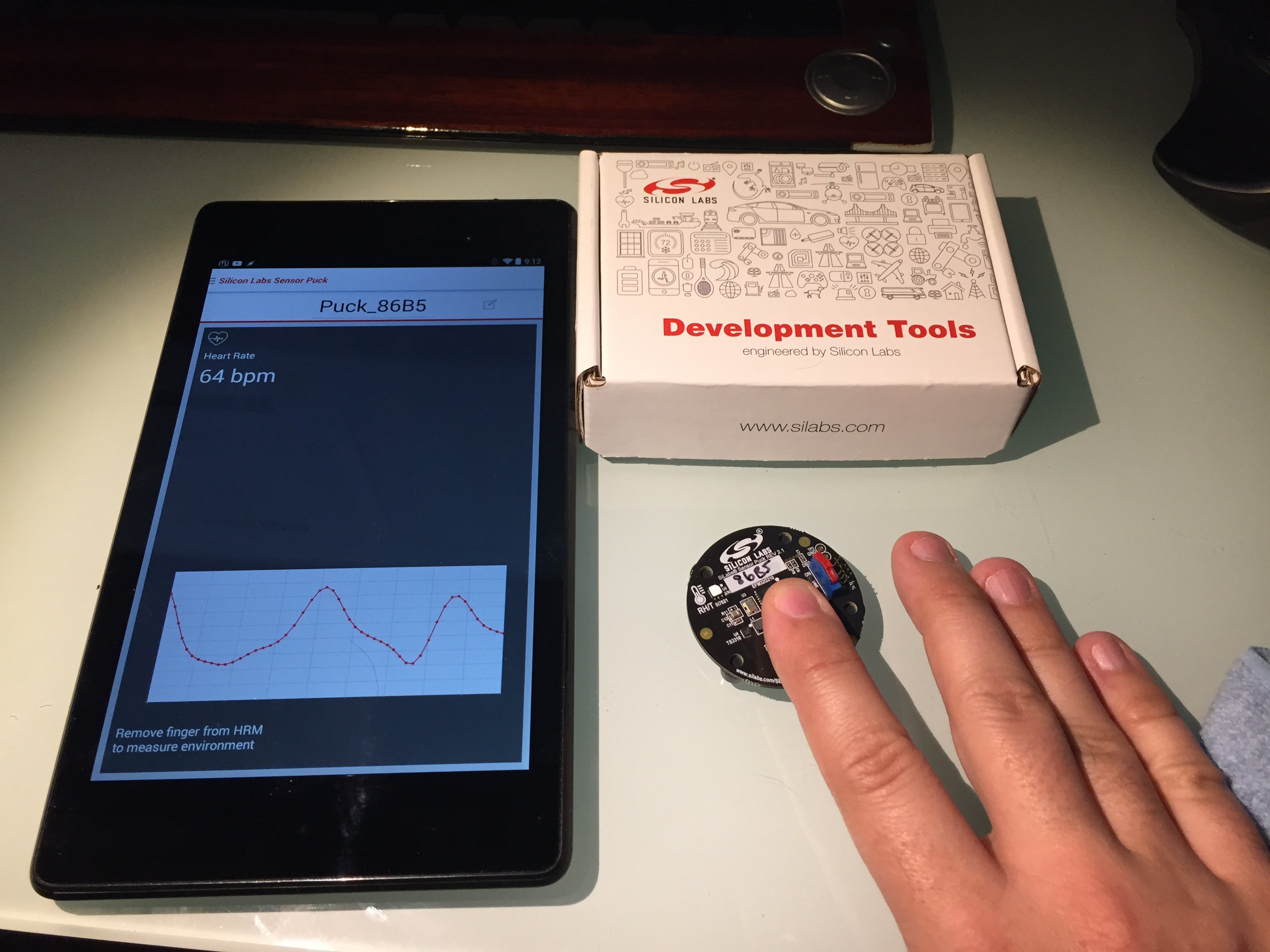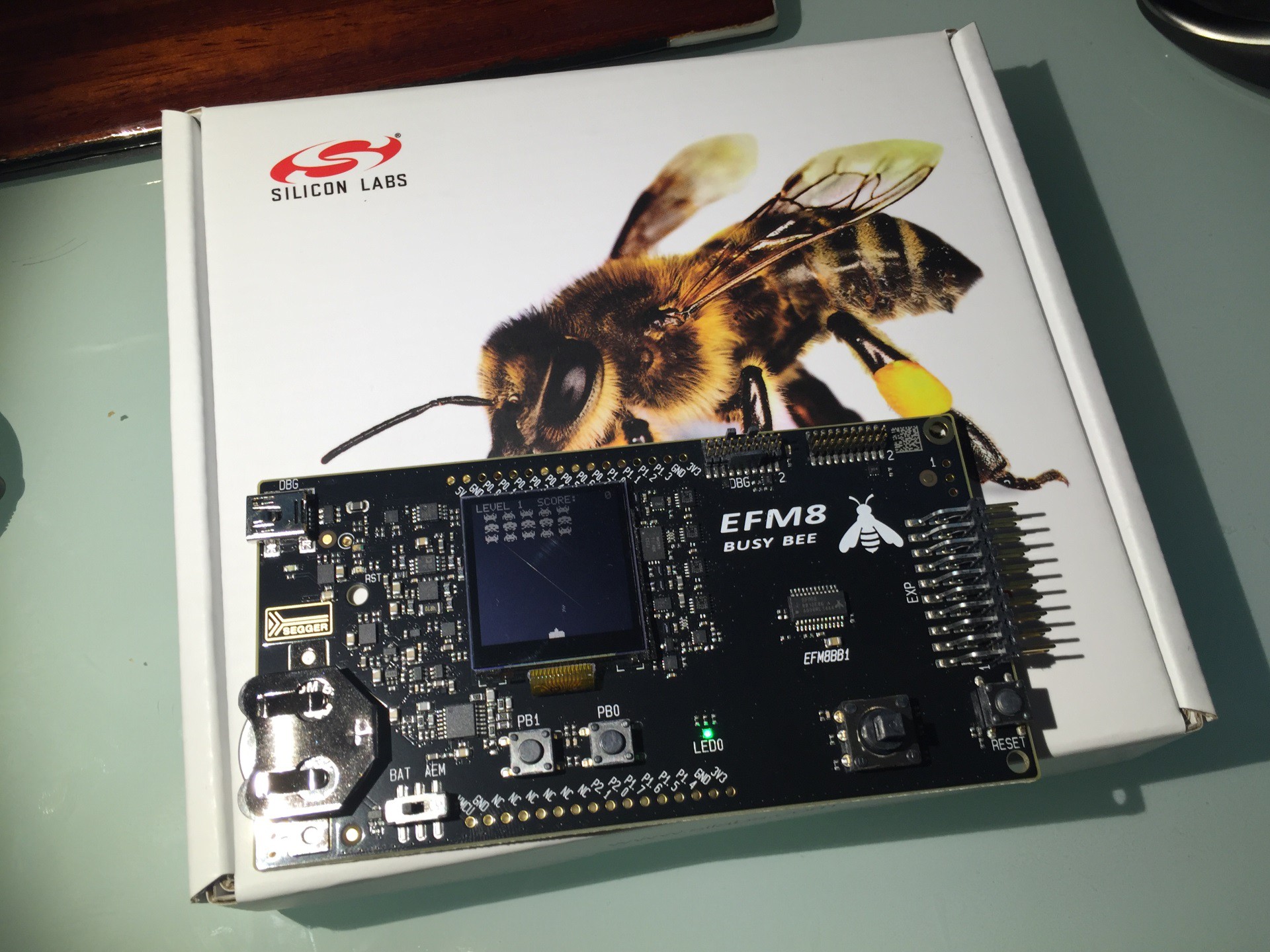-
More prototypes
06/22/2016 at 00:10 • 0 comments![]()
Hey folks,
I finished up another set of functional prototypes. This time for the selection knob, scroll wheel and select button. These worked perfectly as designed, and very little will need to be adjusted. The detents in the scroll wheel and selection knob feel great. The huge throw on the switch is also satisfying. I didn't think that the little details required to hold the potentiometers in place would even be possible on a FDM printer, but the part came out surprisingly good. I only had to ream out the various holes, and file away a few stray bits of plastic. The only change I want to make is to try and beef up the macro knob shaft. Currently it wobbles too much for my taste. As much as I like the 360 turn pots, I may switch the knob back to a normal panel mount type pot; if only so that there is a metal shaft instead of plastic.
--------------------------------------------------
I also printed up the internal arm band, if only to ensure that the Pip-Boy will actually fit onto my arm. It does fit, but will be tight near my forearm, and require padding near my wrist. This tightness is actually required if I locate the heart-rate monitor on the inside of the Pip-Boy.
I am still very much lost on the best way to secure the Pip-Boy to my arm. I don't want the Pip-Boy to be able to rotate out of position like a heavy watch, and this will be a VERY heavy smartwatch.
Here are my ideas so far:
1) Design a form fitting 3D printed structure. I may even go as far as mold my arm and then 3D scan it to get a perfect fit. A velcro strap would be used as backup to the latch.
2) Just try to add padding as in the game model. The padding would have to have variable thickness. I worry however that even with a loose knit thread, that any padding will make it very hot under the Pip-Boy.
3) Design a magnetic gauntlet. Strong magnets in the gauntlet would mate with magnets in the arm band. I like this idea as the gauntlet could be made to look like the in-game leather armor. The magnet would hold the Pip-Boy steady, and if strong enough replace a velcro backup. I could even put the heart-rate monitor and other bio-feedback sensors into the gauntlet. However this idea still has the problem of not breathing, however sweating is apparently step one in any cosplay costume.
Note, I will NOT be adjusting the design to make it one size fits all. It isn't as simple as scaling up the 3D model, as all the electronics are effectively fixed in place. If I go with idea #1, I will release 3D files that allow you to design your own Pip-Boy to Arm interface.--------------
I redesigned the cable reel for the third time. This time I changed to a double sided reel, which prevents the cable from touching the non-moving side of the case.
I changed the pawl such that it has lower friction moving in the retraction direction. I reduced the number of catches to just three, however I may change this one last time as landing on a catch point right now is a bit difficult.
Without the slip ring in place a single spring can handle the load, and the cable return works perfectly. With the slip ring attached I have to double the spring. With the spring doubled, the whole thing works great. Thanks to @loonitick for the double-spring idea. I still am going to try to find a thicker spring as loading two springs into that tiny spool is dangerous and nerve racking. If you let go for just a second the springs explode out and you could easily get cut or loose an eye if you're not wearing protection. I already have a permanent scar on my hand from flying metal, I don't want more.--------------
-
Mechanism Prototypes #2
06/06/2016 at 03:58 • 0 comments
Hey Folks, it has been a month since I posted an update. Real-life is getting busy again. But I did find time to go in an fix issues with my first round of prototypes.
------------------------------
The radio knob assembly was re-designed such that the needle and the electronically read potentiometer were directly connected. In the first build they were separated by a secondary gear, and so if a gear tooth ever slipped the readout would be inaccurate. The new design works very well and is more robust. I also managed to print up some temporary gauge faces. Everything with this prototype works well, so I don't expect any more changes to this part of the design.
------------------------------
The Holotape cassette mechanism was next. I managed to fix the closing mechanism, and all the springs. But when there is too much friction in the system the eject mechanism can get caught up during opening. I may make a few more tweaks to ensure the mechanism is robust and can't get caught up. Otherwise the design is close to finished.
------------------------------
The cable retraction mechanism unfortunately is a different story. I did make some improvements, such as adding a guide for the cable to reel into.
I also removed a spring from a 3ft tape measure, it was the perfect size, however the spring simply isn't strong enough to overcome all the fiction in the system. The reel will feed out and retract if the catch isn't installed, or the slip-ring PCB, but just barely. If the spring were about 3x stronger than the mechanism would work great. However, I can't find any small (20mm Dia x 6mm Thick) springs which are stronger than I have now.
The 3mm thick cable also plays a part in the friction. I have taken apart a retractable USB car-charger which works very much the same as my mechanism and using a smaller spring, but it also uses a much thinner cable. That thinner cable doesn't look game accurate to my eyes, and it only has two wires so would only support charging, and no actual data. Still reverse engineering the car charger has gave me a few ideas, so I will take one more crack at this mechanism to see if I can get it all working. -
Holotape Cassette Mechanism Prototype
05/05/2016 at 13:06 • 0 comments
Today I printed up the holotape test mechanism. I designed the first version of this way back in August. It is really satisfying to see it working in the real world. There are some tweaks to be done. Currently the springs aren't tight enough (They had to be shortened in the test rig). The closing is a bit rough. And it can jam if the Holotape is in just the wrong position. But otherwise, the design actually works! -
Test Rigs 1
05/04/2016 at 03:49 • 0 comments![]()
This post will also be my first set of video updates. I will also type out the details.
I designed a bunch of test rigs to be 3D printed on the Ultimaker 2. Each part designed to test a specific part of the design.
The first test is for the geared down radio knob, FDM 3D print was pretty rough, but did the job. The three gears mesh together and the gearing works great. There is very little to change on this area of the design.
-----------------------------------------
I printed up the communications link cable for testing. One thing I forgot was to add tolerance to the threads, and so the first print got stuck and had to be forcefully separated. Adding 0.2mm of tolerance made the parts fit together perfectly. The bayonet connection works nicely, and holds tight. Once docked it doesn't come loose until you want it. As mentioned when I designed this part, I did a reverse thread, that way if you need to somehow use more force to turn it, the black and white parts won't separate. See the video below showing how the test piece fits together.
-----------------------------------------
(Sorry about the audio on this one, next time I will use my good camera instead of my phone)
Now the cable retraction mechanism was both a success and failure.
The actual cable lock, pawl and spool all work well. I will make some changes to get the wire to wrap a bit better without jamming.
However, the spring I selected was just not designed for this type of retraction. What I need is a spiral torsion spring. However, I can't find any of these available retail, they all seem to be custom. I have a one-way retracting charger cable in my car, which I may rip apart just to see if the spring is useful, the other option is to rip apart a cheap tape measure, as they have the proper spring, although it would be far longer than I need. I will have to think about the whole mechanism a bit more. But that is what prototypes are for. -
Parts and Prototypes
04/28/2016 at 02:03 • 0 comments![]()
Today I came home to the Qualcomm DragonBoard 410C waiting for me. I want to get cracking on using this board, but that will have to wait until the weekend. I also need to design a board that attempts to connect the MIPI interface to the iPhone 4S LCD.
![]()
I also received a box of parts from McMaster-Carr. Note that the Bill-of-Materials lists that all these parts should cost around $40, but due to minimum quantities it actually costs $180 to order all these parts.
![]() I also 3D printed my first set of prototype parts. These were printed at 0.1mm layer height with a 0.4mm nozzle on a Ultimaker 2. It took over three hours to print the parts. My goal here is to get a feel for the parts before I order them in SLS Nylon. My first impression...these parts are smaller than I expected
I also 3D printed my first set of prototype parts. These were printed at 0.1mm layer height with a 0.4mm nozzle on a Ultimaker 2. It took over three hours to print the parts. My goal here is to get a feel for the parts before I order them in SLS Nylon. My first impression...these parts are smaller than I expected![]() I cleaned up the 3D prints. For the most parts these are accurate enough to determine if I need to make any changes to the CAD model. As you can see even at 0.1mm resolution, the parts just don't compare to the smooth finish of the SLS printed Holotape above.
I cleaned up the 3D prints. For the most parts these are accurate enough to determine if I need to make any changes to the CAD model. As you can see even at 0.1mm resolution, the parts just don't compare to the smooth finish of the SLS printed Holotape above.![]() First I attached the button cap to the switch. It fits perfectly. The PLA plastic did crack, as it is fairly brittle, but it did work.
First I attached the button cap to the switch. It fits perfectly. The PLA plastic did crack, as it is fairly brittle, but it did work.I then tested the snap-fit connection on the Potentiometer. The problem is that to make the snap-fit work, I had to remove material from the middle of the shaft, which also in-turn weakened it. So this won't work even in flexible nylon, not without risking the shaft snapping.
![]() My solution is to beef up the shaft all the way to the body of the pot. Then the smaller D-shaped portion passes through the shaft. Finally a C-Clamp will hold the shaft in place behind the pot. This way the assembly can also be tested without worrying about a snap-fit failing after a few uses.
My solution is to beef up the shaft all the way to the body of the pot. Then the smaller D-shaped portion passes through the shaft. Finally a C-Clamp will hold the shaft in place behind the pot. This way the assembly can also be tested without worrying about a snap-fit failing after a few uses.![]() Now onto some of those new McMaster parts. And no that isn't a novelty sized lighter, sneeze and these parts go flying.
Now onto some of those new McMaster parts. And no that isn't a novelty sized lighter, sneeze and these parts go flying.Above is a 2mmx8mm Captive pin. These pins are normally used sheet metal, but they will work well in plastic. However, because the PLA plastic shrinks, the pin doesn't fit into the hole. The solution is to heat up the pin using a lighter. Then once the pin is hot, very carefully push the 3D printed piece onto the pin.
![]() The pin will melt the plastic enough to pass through. As you can see above, a few parts got a bit too hot. But they will still serve their function well enough. Once cooled the pin is a tight fit, but can pull out. Some superglue can be used will set it forever.
The pin will melt the plastic enough to pass through. As you can see above, a few parts got a bit too hot. But they will still serve their function well enough. Once cooled the pin is a tight fit, but can pull out. Some superglue can be used will set it forever.Using this method you can set in small metal pins into plastic. And they won't snap off like a plastic formed pin, and will turn much easier.
-
iPhone 4S LCD, Attempt 1
04/26/2016 at 02:30 • 0 comments![]()
Today I received 6 cracked iPhone 4S LCD screens from eBay. The seller claimed they were all removed from functional iPhones. (Sure probably functional "AFTER" the LCD was replaced)
In either case I didn't necessarily purchase them expecting them to work. No what I need right now is practice, and an accurate CAD model. I am also pretty sure that not one of these are actually authentic OEM displays. But if I get lucky and some work, then great.
![]()
After watching a few videos on YouTube, on how to separate the glass from the LCD. I took two of the LCDs which looked the worst off. One LCD had the ribbon cable separated, and the other had visible cracks in the LCD as well as the top glass. I am sure neither of these displays are functional. Before trying to separate the glass I put on leather gloves and eye protection.
On the first display I tried a method where you heat the display, and draw a cheese cutting wire behind it.
This first display separated a bit too easily. I think that it was a low quality fake, as the backlight basically fell off with very little effort, and the polarizer was plastic.
![]() For the second display I tried a more careful, but tedious method. I first heated the surface of the display to about 60C. Then using a razor I gently lifted the cracked glass away from the LCD. Gently heating up one section at a time and then removing a small area of top glass.
For the second display I tried a more careful, but tedious method. I first heated the surface of the display to about 60C. Then using a razor I gently lifted the cracked glass away from the LCD. Gently heating up one section at a time and then removing a small area of top glass.![]()
After about thirty minutes I was able to remove all the top glass. I did manage to chip two of the corners, and next time I will take more care with those. Hence, purchasing these for practice.
![]()
In the case of this display, the underlying polarizer was actually glass. This allowed me to scrape most of the adhesive off with the razor, and then clean it up with a scotch pad and denatured alcohol.
This display will be used to develop a CAD model of the actual LCD.
I have found at least one Hong Kong supplier who lists the raw LCD without digitizer or top glass. But they haven't replied to e-mail for two days now, and as usually simply list the display in hopes I will accept a different in-stock model.
-
First Hackaday Hackathon
04/24/2016 at 22:45 • 0 commentsThis weekend I attended the first ever Hackaday Hackathon here in Austin, TX. It was a great and memorable event. I met lots of great people working on their own projects.
The hackathon was held at the Silicon Labs office, which was perfect for me, as I was trying to get my hands on a Silicon Labs heartrate monitor, ever since i met one of their reps at a TechShop meetup.
I scored two development boards, both of which I can use in the Pip-Boy design.
The first is the Sensor Puck. This thing is great. It is a Bluetooth LE device. Onboard it has a heart rate sensor, temperature sensor, and humidity sensor. The same heart rate sensor can also read UV index and ambient light if left exposed. As you can see in the image above, the board works out of the box. I can't say enough how much ready to use development boards like this help a non-programmer such as myself.
I have tried holding the monitor up to my wrist, with mixed results. It works sometimes if positioned directly over a vein, but not anywhere else on the arm. This chip was really designed more for reading a finger tip. Most wrist-mounted smartwatches typically use very powerful dual green LEDs to read your heart rate. So I may not be able to mount the sensor directly into the Pip-Boy armband. But it gets me a start on how these things works and if I can integrate the sensors.
/Edit: I noticed that the Si1147 chip does support external LEDs for the heart rate, so it sounds like I can boost the signal for use on the wrist.
The other development board I got was the EFM8 Busy Bee. This board comes with Space Invaders already installed. After a few minutes of playing around with that I only managed to get to level 4.
I may be able to use this dev board and chip to handle all the other stuff that the DragonBoard can't handle. Such as Analog input and LED PWM control. The board also has a five way joystick, which others have suggested I add to my project, It works well enough I may just try.
The best part is that Silicon Labs provides lots of support for their development boards.
-
April 20th Status
04/21/2016 at 02:18 • 0 commentsHey Hackaday folks,
I have a very detailed 13 page project log which has been running since August 2015. Too large to duplicate here. But I will be publishing updates here as well as on my original log.
So here is the current status of the project (April 20th):
- I have 99% of the mechanical design complete.
- I have a nearly complete bill-of-materials, excluding the printed circuit boards
- I recently switched to using the Qualcomm DragonBoard 410c. This is a very fast single board computer, which includes GPS and FM radio, as well as on-board audio features. All of which I need for this project.
- Because the DragonBoard uses MIPI DSI for it's video output I am currently researching two possible LCD screen methods. The first is using a iPhone 4S LCD screen. It is high-resolution, has a MIPI interface, and is of course dirt cheap these days.
- I can't seem to get any real data the iPhone 4S touch-screen controller, or a compatible substitute, so the plan is to use add normal touch-screen overlay to the LCD.
- The other possible method is to use a MIPI to Parallel RGB controller. However, only one larger BGA chip from Toshiba seems to be available retail for this method. So this will be "Plan B"
 zapwizard
zapwizard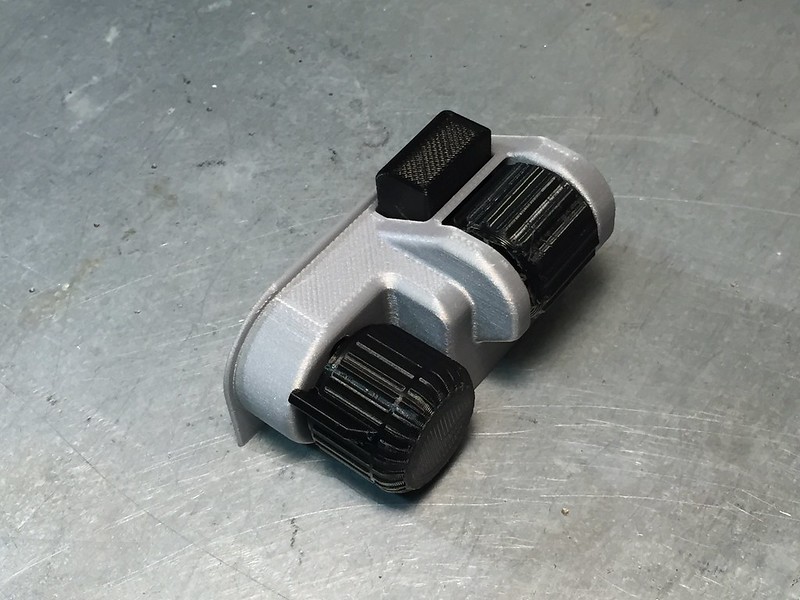
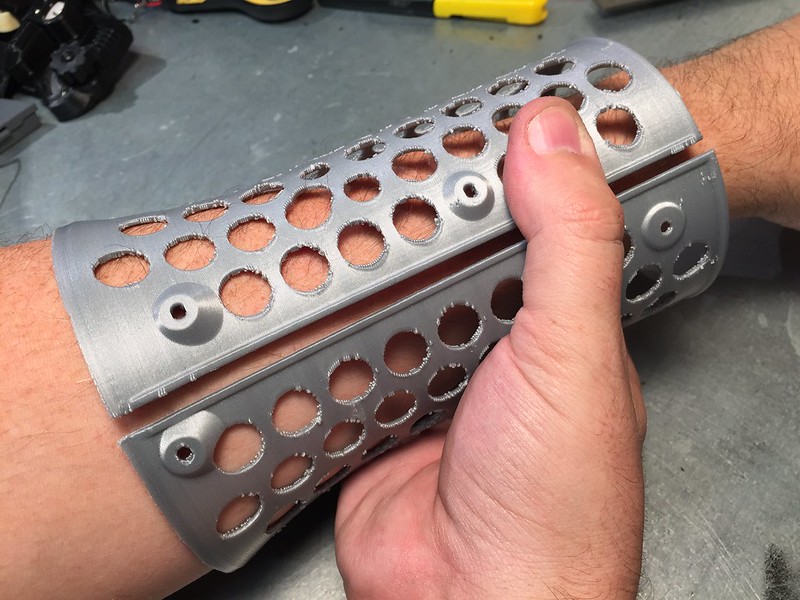
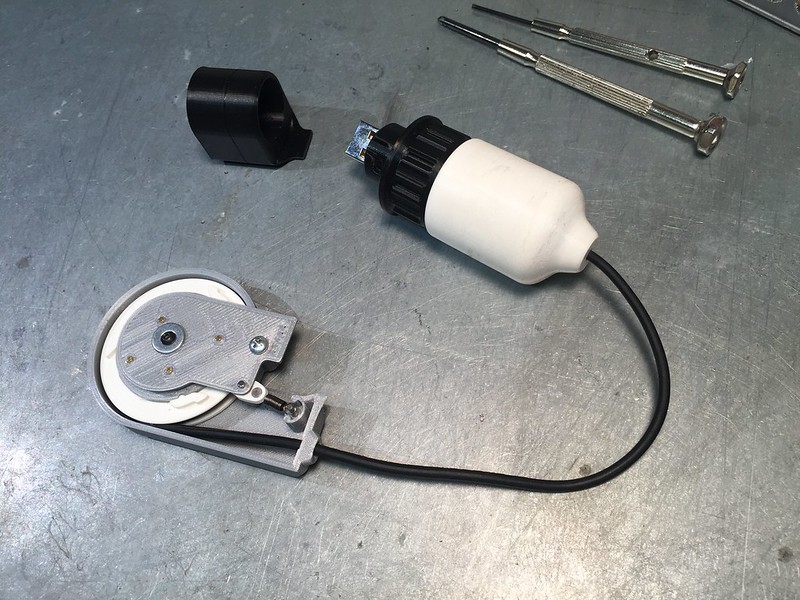
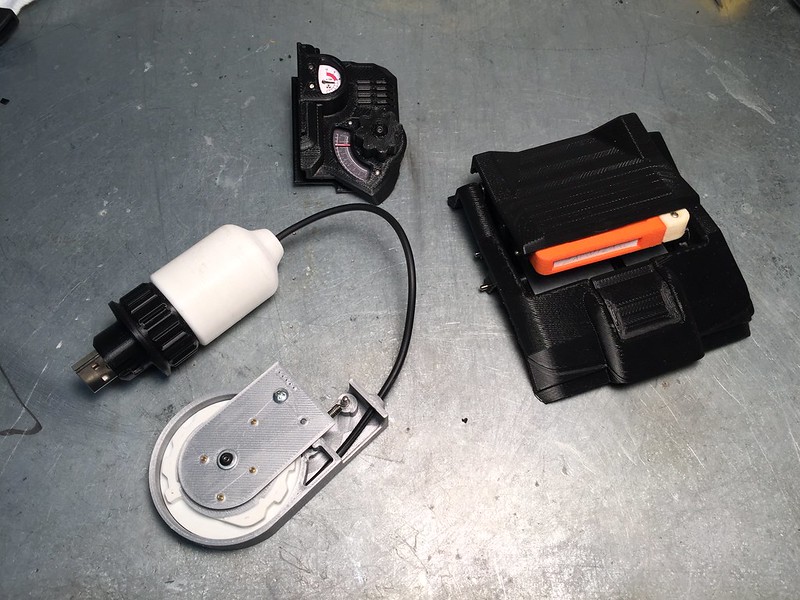
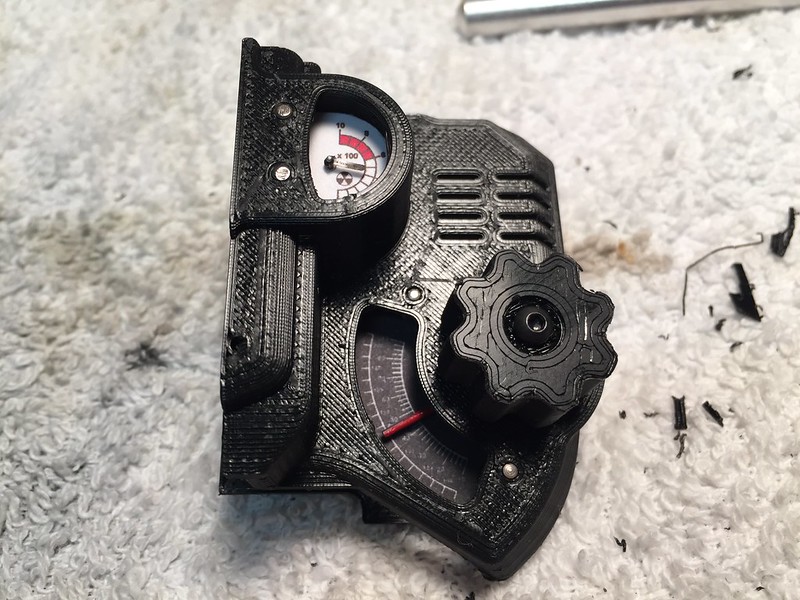
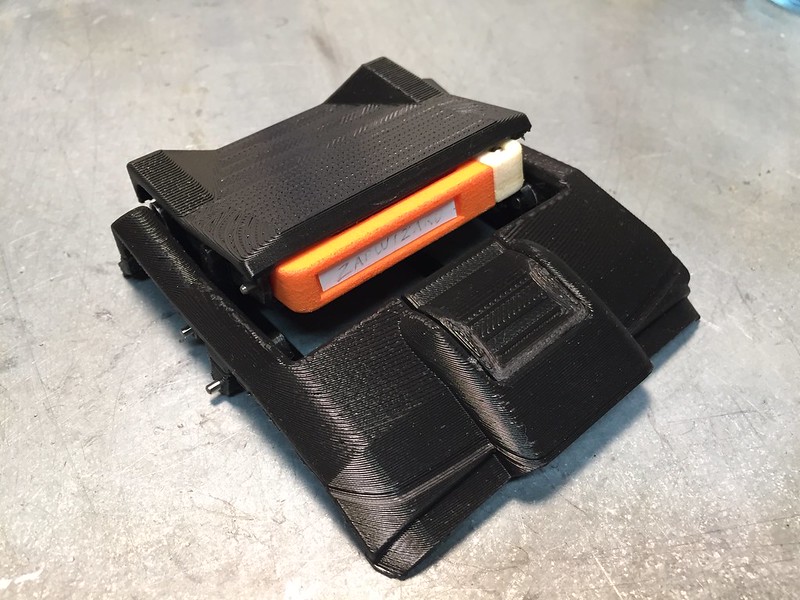
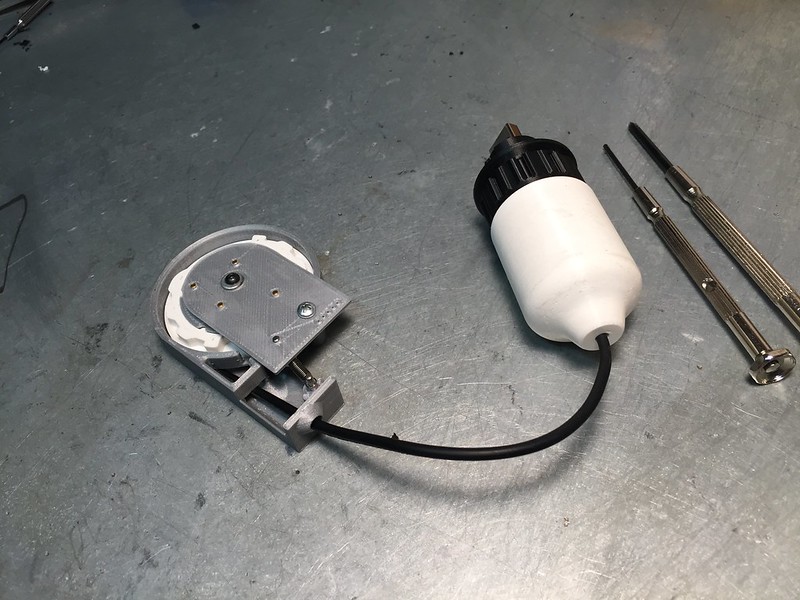
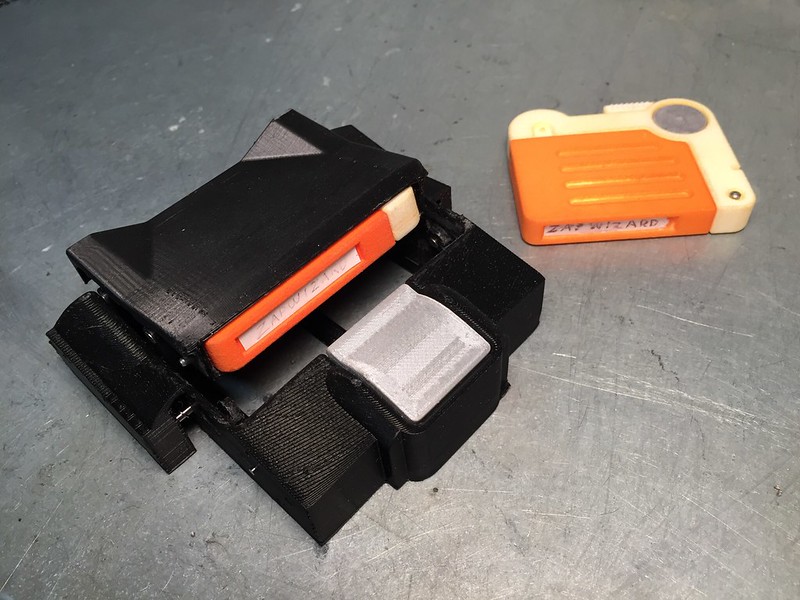

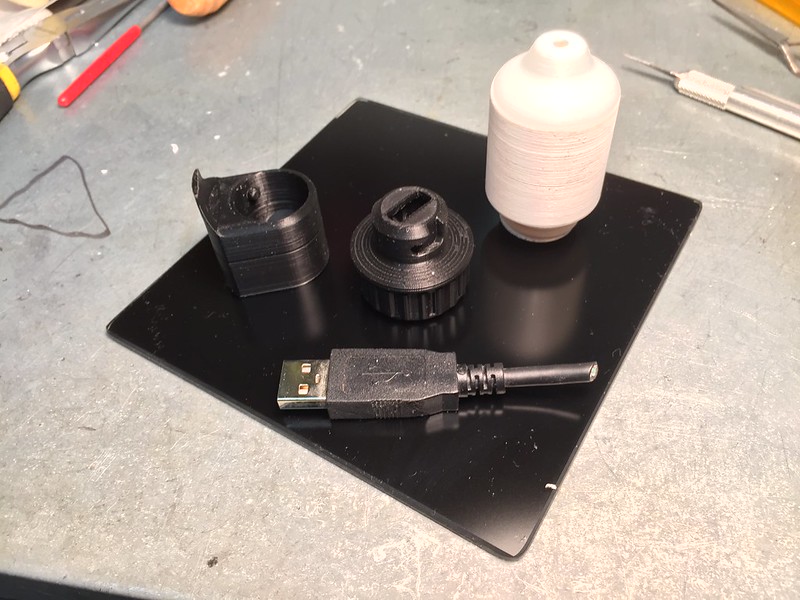

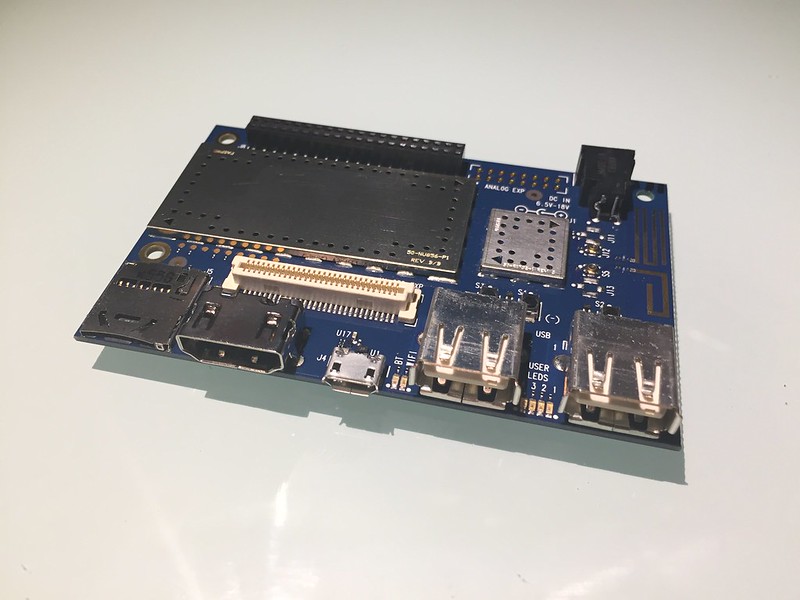
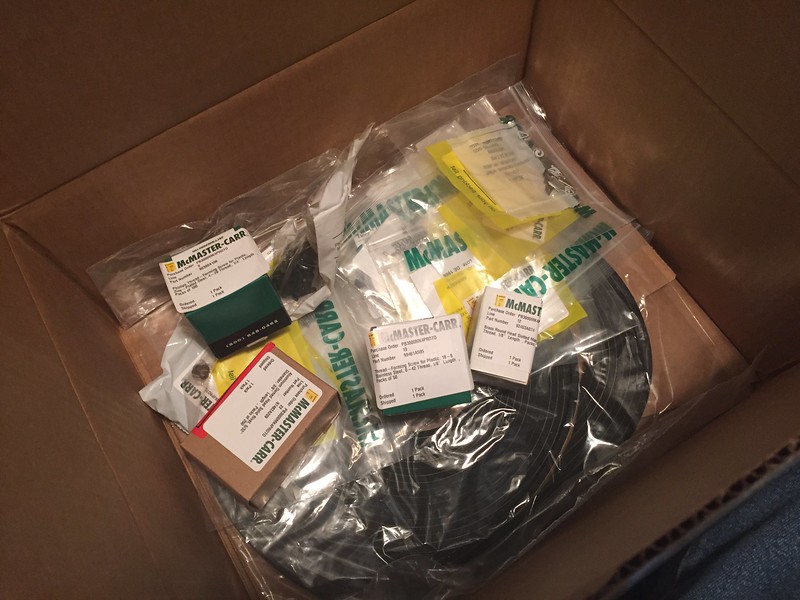
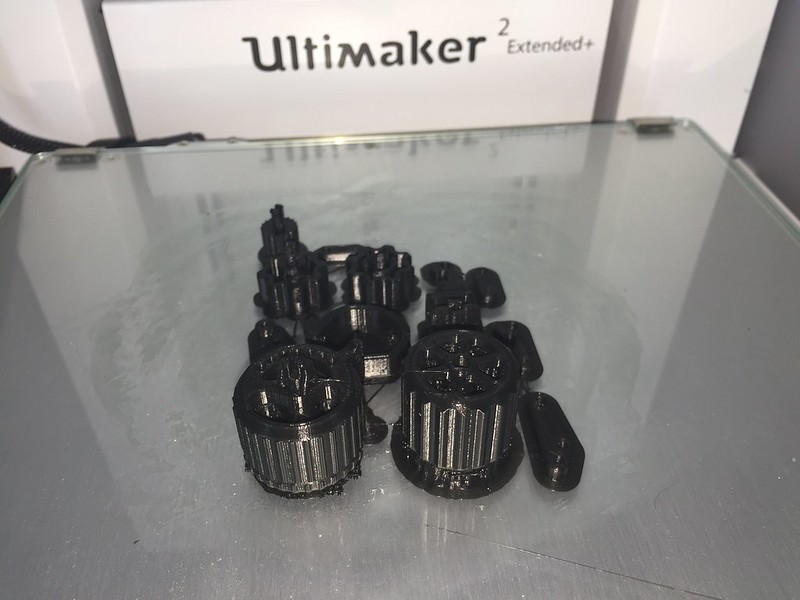 I also 3D printed my first set of prototype parts. These were printed at 0.1mm layer height with a 0.4mm nozzle on a Ultimaker 2. It took over three hours to print the parts. My goal here is to get a feel for the parts before I order them in SLS Nylon. My first impression...these parts are smaller than I expected
I also 3D printed my first set of prototype parts. These were printed at 0.1mm layer height with a 0.4mm nozzle on a Ultimaker 2. It took over three hours to print the parts. My goal here is to get a feel for the parts before I order them in SLS Nylon. My first impression...these parts are smaller than I expected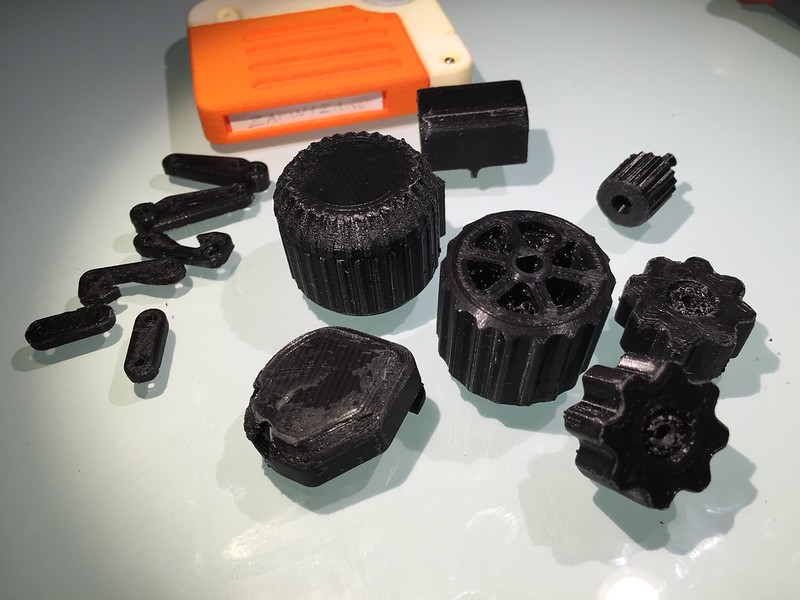 I cleaned up the 3D prints. For the most parts these are accurate enough to determine if I need to make any changes to the CAD model. As you can see even at 0.1mm resolution, the parts just don't compare to the smooth finish of the SLS printed Holotape above.
I cleaned up the 3D prints. For the most parts these are accurate enough to determine if I need to make any changes to the CAD model. As you can see even at 0.1mm resolution, the parts just don't compare to the smooth finish of the SLS printed Holotape above.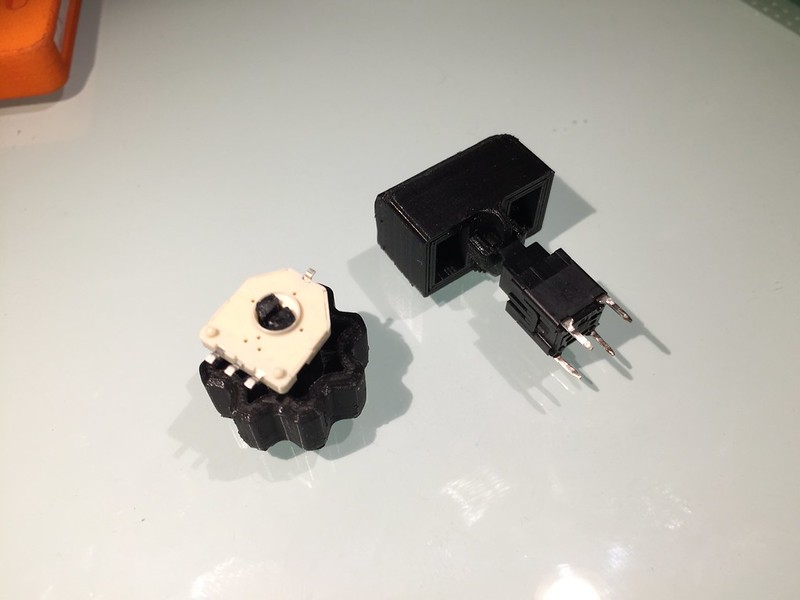 First I attached the button cap to the switch. It fits perfectly. The PLA plastic did crack, as it is fairly brittle, but it did work.
First I attached the button cap to the switch. It fits perfectly. The PLA plastic did crack, as it is fairly brittle, but it did work.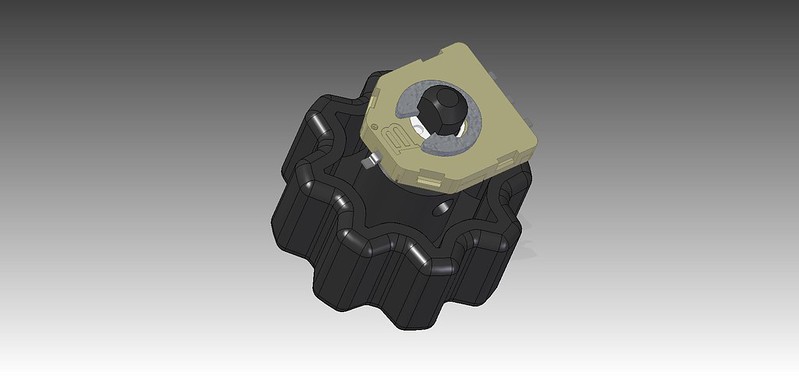 My solution is to beef up the shaft all the way to the body of the pot. Then the smaller D-shaped portion passes through the shaft. Finally a C-Clamp will hold the shaft in place behind the pot. This way the assembly can also be tested without worrying about a snap-fit failing after a few uses.
My solution is to beef up the shaft all the way to the body of the pot. Then the smaller D-shaped portion passes through the shaft. Finally a C-Clamp will hold the shaft in place behind the pot. This way the assembly can also be tested without worrying about a snap-fit failing after a few uses.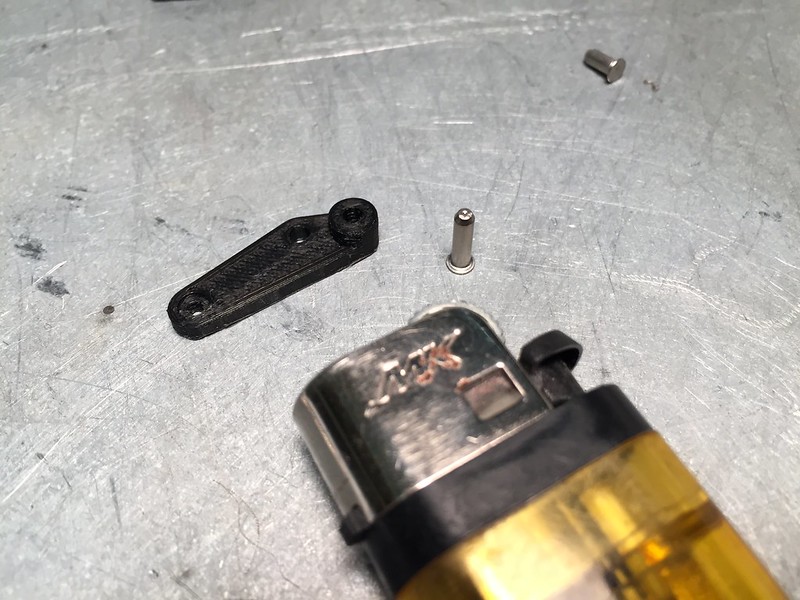 Now onto some of those new McMaster parts. And no that isn't a novelty sized lighter, sneeze and these parts go flying.
Now onto some of those new McMaster parts. And no that isn't a novelty sized lighter, sneeze and these parts go flying.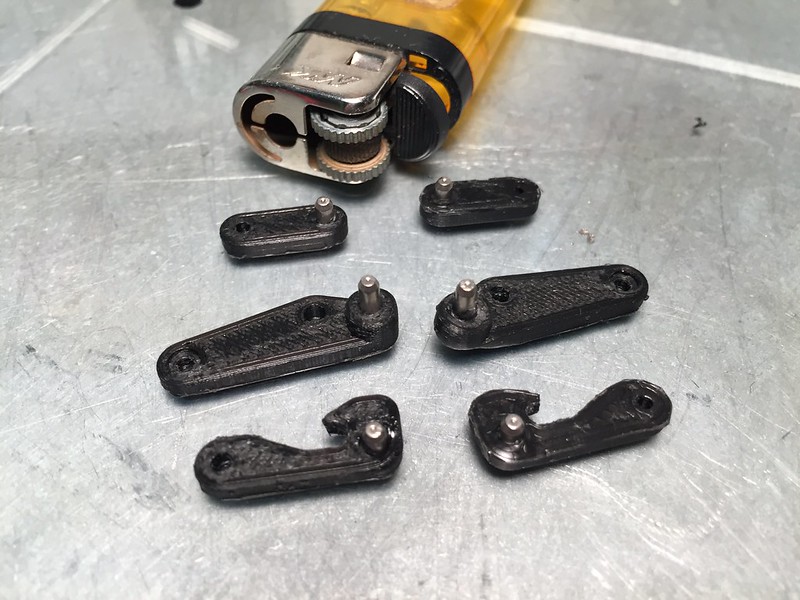 The pin will melt the plastic enough to pass through. As you can see above, a few parts got a bit too hot. But they will still serve their function well enough. Once cooled the pin is a tight fit, but can pull out. Some superglue can be used will set it forever.
The pin will melt the plastic enough to pass through. As you can see above, a few parts got a bit too hot. But they will still serve their function well enough. Once cooled the pin is a tight fit, but can pull out. Some superglue can be used will set it forever.